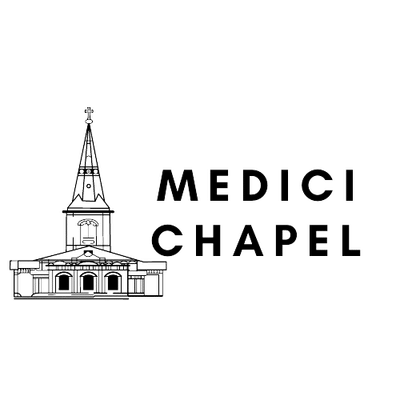Medici Chapel History
Explore the Medici Chapel
The Crypt is an important part of the history of Medici Chapel and is the resting place of numerous members of the Medici family. The tombs of Grand Dukes are situated within vaults that are supported by pietra serena pilasters, while glass display cases showcase a portion of the priceless Treasure of San Lorenzo. From precious gold and silver reliquaries commissioned by Medici Grand Dukes of the fifteenth to eighteenth centuries to papal gifts like pearl-studded papal headdress and processional banner with Medici coat of arms, the collection of rare artefacts in the Crypt is unmatched. Other highlights of the Crypt include a bronze statue of Anna Maria Luisa, the last Medici, and the tomb of Cosimo the Elder.
The most significant part of the Medici Chapel history is the Chapel of the Princes, which was constructed as the main mausoleum for the Medici clan. Magnificent in its opulence and massive space, it rivals the grandeur of the Basilica di San Lorenzo of which the Medici Chapel is a part. Commissioned by Cosimo I, the Chapel of the Princes was designed by Matteo Nigetti with insight from Giovanni de Medici. Adorned with polychromatic marble and semi-precious stones, the chapel walls symbolise the immortality of the Medici clan. Six niches are carved into the walls, where life-size statues of two Medici Grand Dukes stand along with urns bearing ducal crowns and shields of Florence’s 16 cities. The High Renaissance chapel also has stunning frescoes by Pietro Benvenuti.
The ultimate creation in Medici Chapel history is the New Sacristy by Michelangelo, which marks the high point in Renaissance architecture in the Medici Chapel. Considered “sculpted architecture”, the New Sacristy was designed and decorated by Michelangelo, who created a Mannerist marvel with unusual configurations. A distinct break from classical architectural styles is seen in the structure, where the cupola was inspired by the Roman Pantheon and adorned with terracotta art. The windows of the Sacristy were placed so that they lit up the tomb sculptures according to the time of day they represented. The seven tomb sculptures, including Dawn, Dusk, Night, and Day, along with Madonna with Child, represent deep symbolism of life, time, and immortality and adorn the tombs of the most renowned of the Medici.
Book Now - Accademia Gallery Tickets
Medici Chapel Timeline
FAQs
Why is the Medici Chapel important?
The Medici Chapel was constructed as a celebration of the Medici family, the influential rulers of Florence and one of the most important clans in European history. As the Medici patronised arts, their chapel holds significance to the world of art, primarily as one of the only architectural works ever completed by Michelangelo and as the home of iconic sculptures and artworks of the High Renaissance.
How long did it take to build the Medici Chapel?
The construction of the Medici Chapel was a long-drawn affair that faced numerous obstacles and was completed over more than two centuries. While some parts of the Medici Chapel like the Chapel of the Princes were completed in the 20th century, much of the structure was completed by the eighteenth century.
Who painted the ceiling of the Medici Chapel?
The ceiling of the Medici Chapel was painted by its main architect and designer, Michelangelo, who also created many of the sculptures and frescoes that adorn the interiors of the Medici Chapel.
You Can Also Like: Shopping in Florence
Who is buried in the Medici Chapel?
The Medici Chapel was the resting place of the members of the Medici family, who ruled Florence and later Tuscany from the fifteenth to eighteenth centuries and were among the most influential and powerful clans in Europe’s history. The Italian bourgeoisie family were bankers who transformed Florence into the hotspot of the High Renaissance.
Also Checkout - Vatican Gardens
How old is the Medici Chapel?
The history of Medici Chapel can be traced back to 1520 when Pope Leo X commissioned Michelangelo to the construction of a family burial ground. While it took many years to complete the work on the chapel, the Medici Chapel is more than 500 years old.
Also Checkout: Museums In Rome, Christmas In Rome
What are the best attractions to see in Italy?
Italy is a country rich in history, culture, and natural beauty, offering a plethora of attractions. Here are some of the best attractions to see in Italy:
- The Colosseum (Colosseo) - Rome: A symbol of Ancient Rome, the Colosseum is a historic landmark. To reduce wait times, it's advisable to purchase skip-the-line tickets.
- Accademia Gallery (Galleria dell'Accademia) - Florence: Home to Michelangelo's renowned sculpture, David, the Accademia Gallery is a key attraction in Florence. Ensure a seamless visit by purchasing Accademia Gallery tickets in advance.
- Leaning Tower of Pisa (Torre Pendente) - Pisa: The globally recognized Leaning Tower of Pisa is a landmark. For panoramic views from the top, it's advisable to book Leaning Tower of Pisa tickets in advance, especially during peak tourist seasons.

